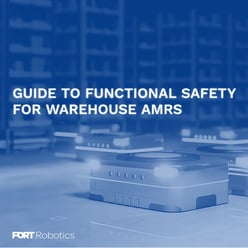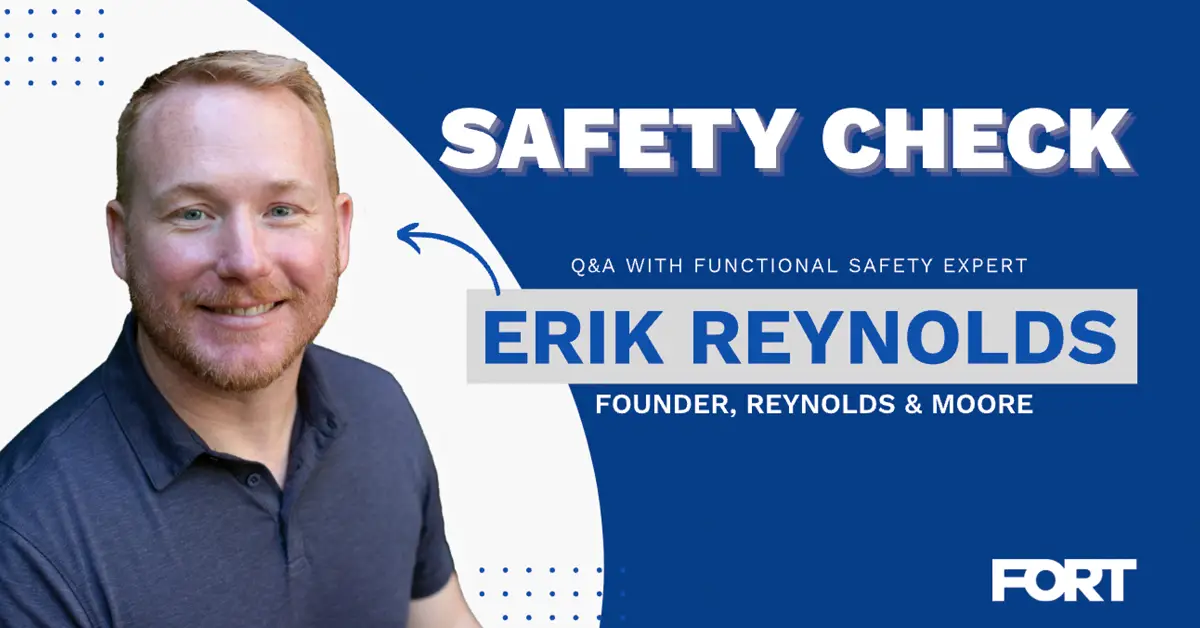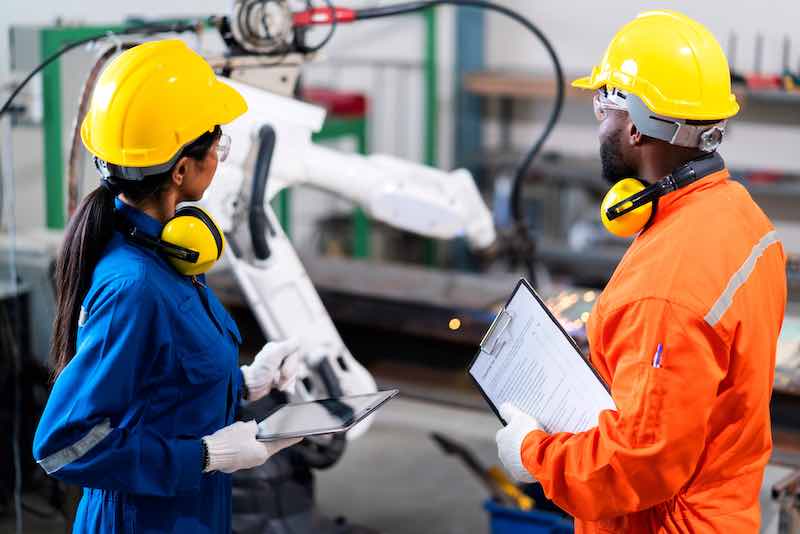
Designing mobile robot safety systems is a huge undertaking. From onboard sensors to safety PLCs, you need to make sure your future customers are safe at all times. But, what happens when a safety system fails? How will your machine respond? Just one failure could lead to disastrous consequences that will impact your company’s brand and your personal conscience. That’s why functional safety is key to understand and implement in your robot design.
Functional safety is an engineering methodology used to design the overall safety of a system and ensure an acceptable level of risk. Its goal is to assess and quantify the potential risks for injury or damage, and to limit those risks through built-in automatic protection functions.
A specialization all its own, functional safety involves a unique curriculum and certifications. Certified Functional Safety Engineers (CFSE) and Certified Functional Safety Professionals (CFSP) undergo extensive training and testing to obtain certification, in addition to years of design experience and regular credential renewals.
Functional safety requires a holistic assessment of each part of a system, and thorough planning for possible failures. Components can and do fail over time due to environment, use, age, hardware faults, or human error. By implementing automatic protection systems, functional safety engineers work to ensure that if or when those failures occur, the machine will have safe, predictable response. In other words, it will fail in a safe way.
Everyone has some idea about what a “safe” device is. But when machines are interacting directly with people, a defined and rigorous safety approach is needed. Agencies such TUV and Exida grant certifications based on specific levels of functional safety. Third-party agency certifications are appropriate and an essential step to demonstrate an OEM’s design due diligence. In some cases, certification may be required for robots in a particular environment. In others, certification is a best practice to reduce risk and limit the liability for machine manufacturers in the case of an incident.
Many existing safety design standards were developed for stationary machines or those with limited mobility. Ensuring functional safety for mobile and autonomous machines is more complex. With autonomous system technology evolving rapidly, these safety requirements are just beginning to materialize. Previous safety standards assumed either the robot was a stationary arm, or that the mobile robot followed a predefined path, such as in the case of Automated Guided Vehicles (AGVs.)
In December 2020, after more than four years of collaboration from hundreds of industry experts, the American National Standards Institute (ANSI) approved a new consensus safety standard for Industrial Mobile Robots. This new standard is called ANSI/RIA R15.08-1-2020 or simply R15.08-1 for short. R15.08 Part 1 is a 122-page document that provides technical requirements for the design and integration of industrial mobile robots.
This is the first in a three part series aimed at informing equipment builders (OEMs), integrators and users of industrial mobile robots. The first part of the standard focuses on the safety design requirements for mobile robots. Part 2, currently under development, will address the adaptation and integration of mobile robotic systems. Finally, Part 3 of the standard will outline the safety requirements for the users of these systems.
Many roboticists have an understanding of functional safety but they may not have the time to focus on it due to its complexity and ever-evolving requirements. Using a third party helps mobile robot OEMs avoid unforeseen, costly, schedule-busting rework scenarios and enables them to focus on their unique value proposition.
Want to learn functional safety design considerations for autonomous mobile robots? Download our free guide below.



